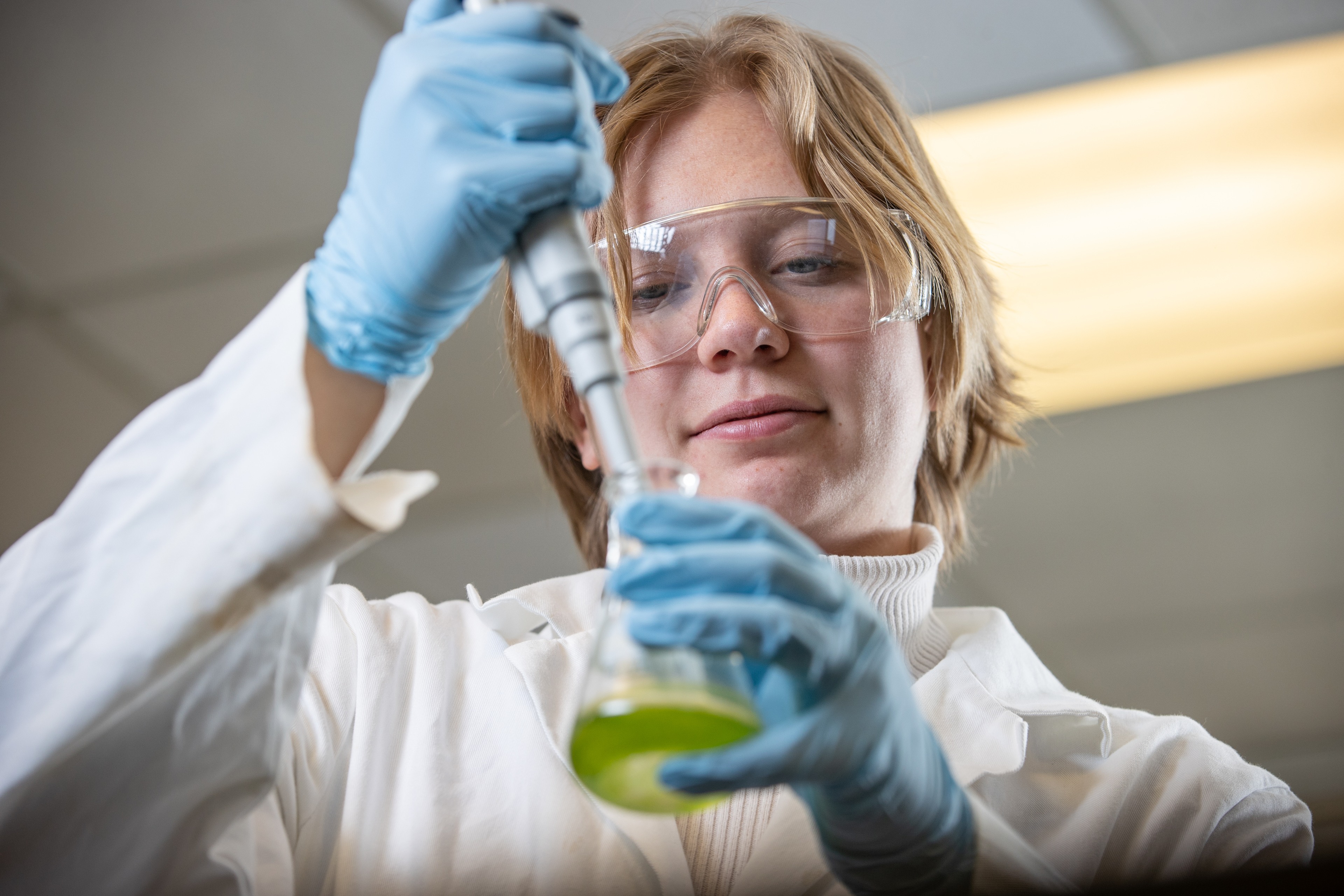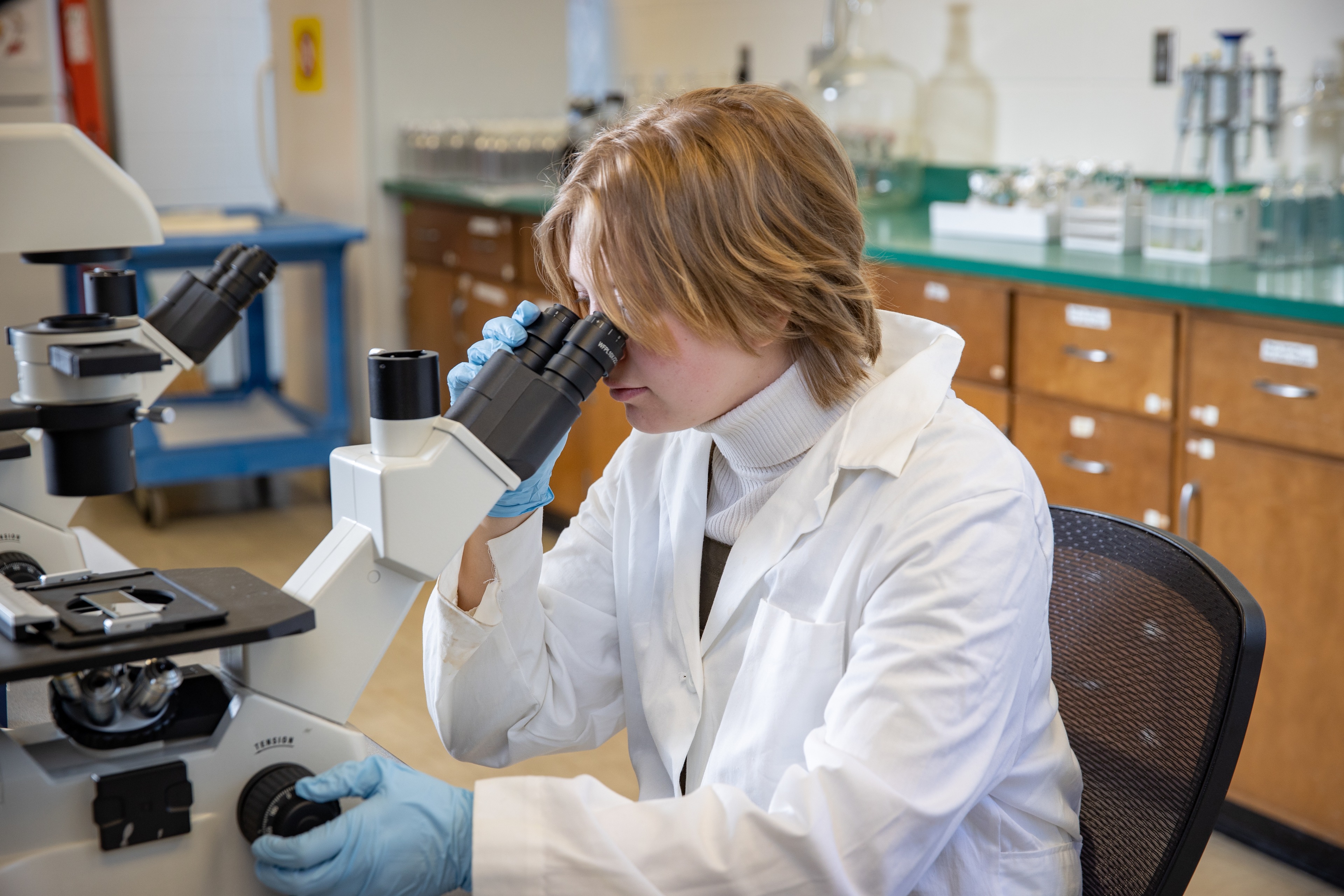
University helps guide Honors College student to a future in environmental research
Alexis Heath, who completed a U.S. Department of Energy STEM internship in the Pacific Northwest, dreams of teaching in her own lab someday
By Laren Kowalczyk '07
Before enrolling at Bowling Green State University, Alexis Heath knew she wanted to study biology. She had always been interested in science, so it seemed like the obvious path to follow.
What Heath said she was less sure of was her future career.
“I didn’t really know all the career opportunities available for someone with a biology degree,” said Heath, a senior in the Honors College at the University. “So, I went with a general science degree and hoped for the best.”
It didn’t take long for Heath to narrow her focus after – at the suggestion of a professor – she began working in the lab of Dr. Christopher Ward, assistant professor in the Department of Biological Sciences at BGSU.
What followed was a clear path to her desired profession and a prestigious summer internship that allowed her research to make an impact in the national climate change conversation.
I feel like I’ve been really fortunate with my professors and mentors at BGSU guiding me in the right direction. The more time I’ve spent in the lab, the more I realized this is where I want to be.
- Alexis Heath, BGSU senior
Heath grew up southwest of Lima, Ohio, on Grand Lake St. Marys, which has been the subject of research at the University due to the lake's algal bloom problems that compare to Lake Erie's.
“The professor recommended the lab after she realized where I was from,” Heath said. “She made that connection for me, and I’ve been in the lab ever since. I feel like I’ve been really fortunate with my professors and mentors at BGSU guiding me in the right direction. The more time I’ve spent in the lab, the more I realized this is where I want to be.”
Heath immersed herself in Ward’s lab and has worked with Dr. George Bullerjahn, emeritus professor of biological sciences and director of the Great Lakes Center for Fresh Waters and Human Health. She's assisted with algal bloom monitoring projects in Sandusky Bay and has even collected water samples from Grand Lake St. Marys as part of the project.
Heath also had the opportunity to collaborate with a senior research scientist at the National Oceanic and Atmospheric Association (NOAA) to determine how Microcystis - the cyanobacterial species that causes harmful algal blooms in the western Lake Erie basin - is affected by climate change.
Ward said the project required a lot of precise hands-on work, but Heath welcomed the challenge.
“She had to tinker with getting the flow rates on the carbon dioxide tanks just right to make sure everything was working perfectly,” Ward said. “Her dedication and willingness to work on something until it was right were impressive.
“She’s so excited about the opportunity to learn new skills and topics and really challenge herself. She really sets herself apart in that way, and it’s infectious to her fellow undergrads and graduate students.”

From BGSU to the Pacific Northwest
As her passion for research grew, Heath began applying for internships, which led her to the Pacific Northwest National Lab (PNNL) in Richland, Washington, as a scholar in the Science Undergraduate Laboratory Internships (SULI) program last spring.
She worked on a research pilot project called 1,000 Soils, which, through a first-of-a-kind database, will allow scientists to understand the processes that govern soil carbon storage across diverse ecosystems and the role of soil in greenhouse gas emissions.
“They’re collecting 1,000 soil samples from across the country,” Heath said. “My job was to take the samples, filter out all the rocks and roots and then take measurements and analyses to help understand carbon storage capacity. It’s a good measurement of how our climate is changing and how nutrient cycling can help us understand the watershed as a whole and where we can focus our mitigation efforts.”
Heath spent about 20 hours each week analyzing data and developing scripts in R, a programming language for statistical computing and graphics.
“R is perfect for creating visualizations and discovering patterns from large data sets,” she said. “We can easily see different soil temperatures and various levels of carbon throughout the United States. Some of the figures I developed in R have been used in presentations the lab has given nationally, which is really exciting.”
The experience of working in the PNNL lab full-time during the Spring 2022 semester helped Heath better understand the impact she can have as a researcher. It also inspired her to pursue graduate college.
“When you’re doing research a few hours a week, you don’t really get the full spectrum of what a job in research really looks like,” she said. “Having a small role in this large-scale project allowed me to see my impact on the project and the bigger picture of what you’re trying to solve.
“I like the idea of constantly learning and growing in my career, and I would love to teach and run my own lab in the future.”
Related Stories
Media Contact | Michael Bratton | mbratto@bgsu.edu | 419-372-6349
Updated: 01/06/2026 09:44AM




